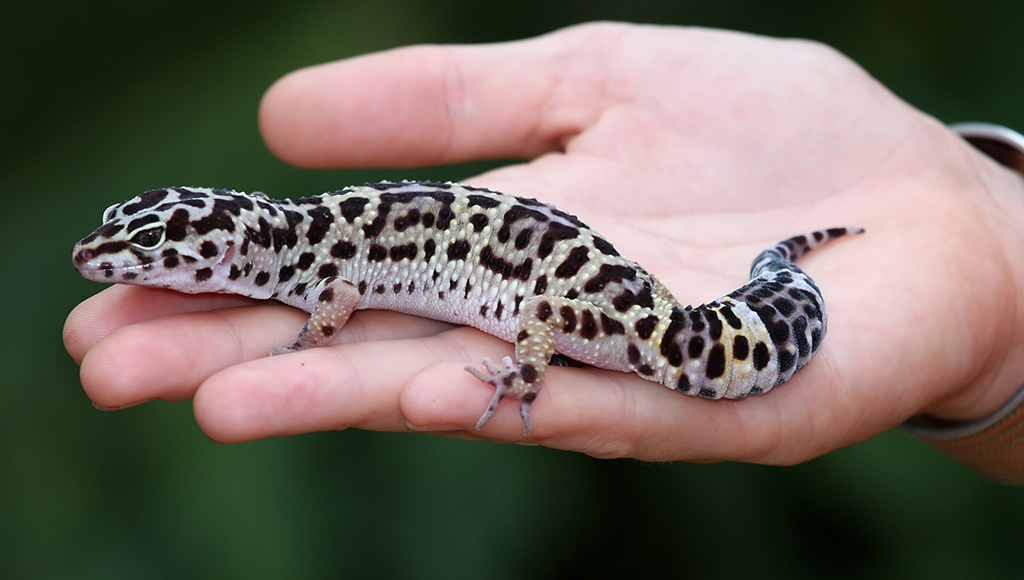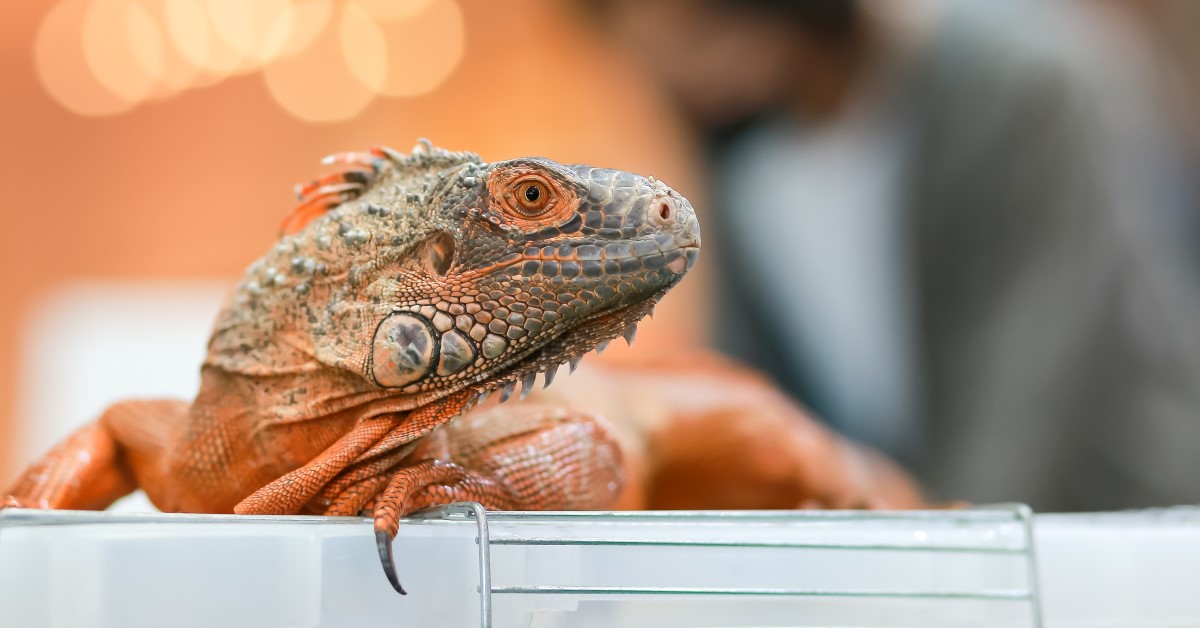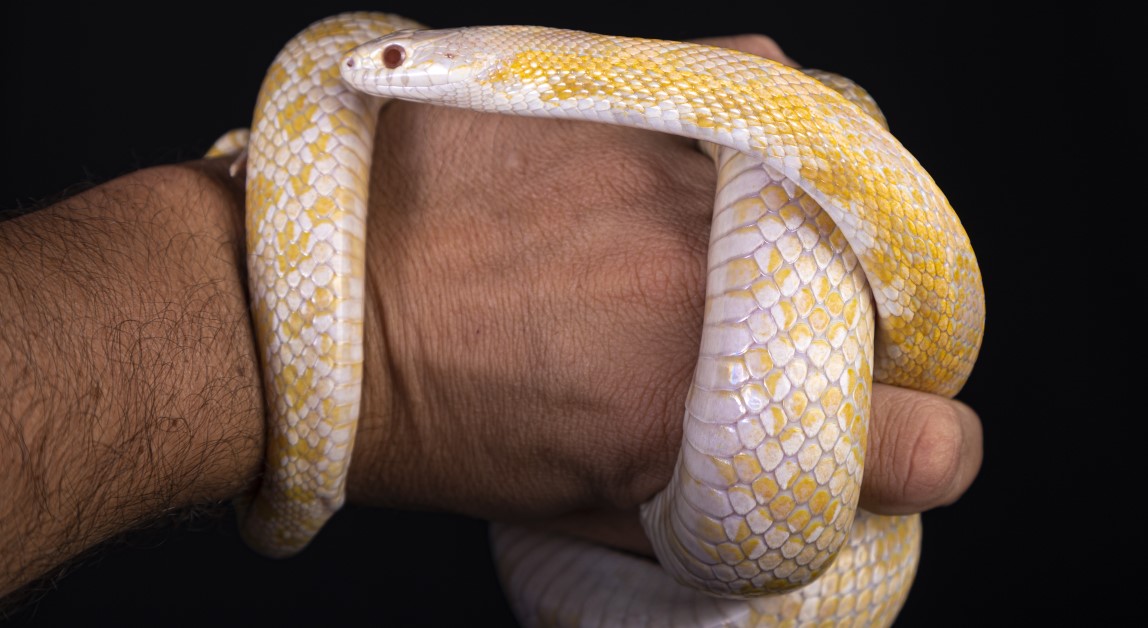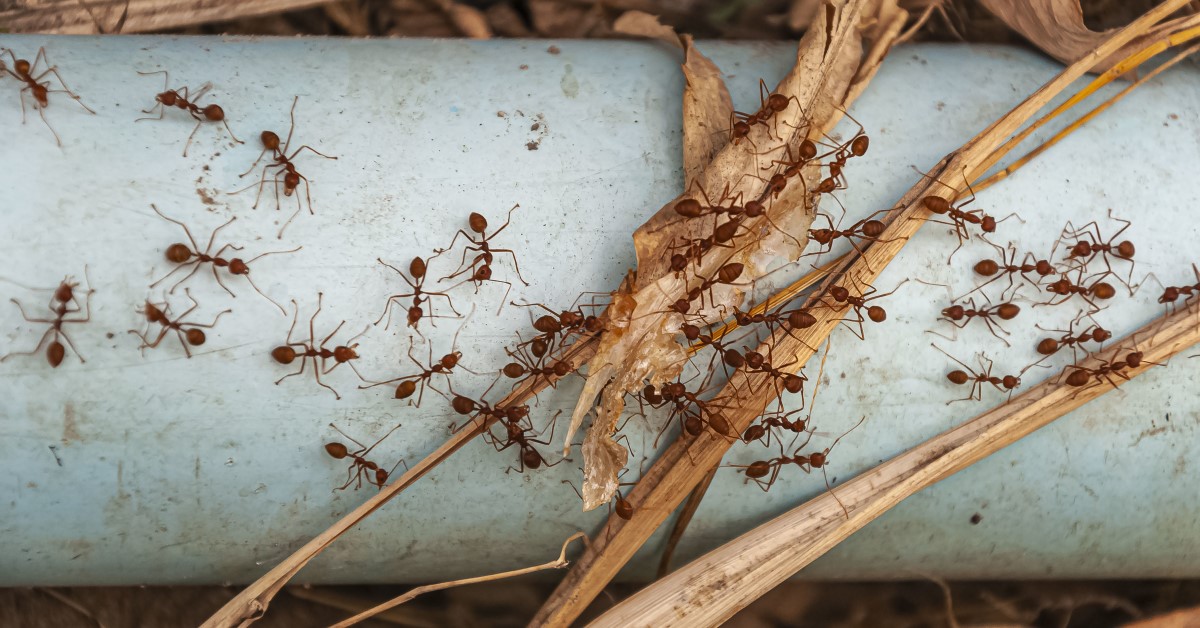Beginner Pet Lizard: Leopard Gecko
This tiny, brightly colored lizard is an excellent starter pet for anyone interested in reptiles.

A leopard gecko makes an excellent pet for many reasons. These colorful creatures are small, have minimal care requirements, and can be left alone for several days if necessary. They are also quiet, don’t smell, and don’t need a lot of attention. Leopard geckos are inexpensive and easily available from pet stores and breeders. These tiny reptiles are also popular because they do not require a large amount of space. Leopard geckos come in a wide variety of colors and pattern variations too.
Interesting Facts
Leopard geckos are lizards native to Pakistan, India, and Afghanistan where the terrain is very dry and rocky. The geckos live on and under the ground and are nocturnal. A leopard gecko has a triangular head and a large tail where it stores fat. Its skin is very bumpy and heavily patterned; designed to help camouflage the gecko from predators.
Housing
The housing for a leopard gecko is pretty basic and inexpensive. It's best to have the materials you need for your gecko's new home, all set up before you bring him home. This will give you an opportunity to make sure it is the correct temperature for him once he has arrived.
You will need an aquarium or terrarium with a screen top to prevent your gecko from escaping and help prevent any other pets from getting to your gecko. These can be purchased at any pet store. A 10-gallon tank should be more than sufficient for this tiny reptile. If you are going to have more than one gecko, the general rule is 10-gallons per gecko. So to house two geckos, you'd need a 20-gallon tank, and so on. Here's what you'll need to go inside the tank to complete his new habitat:
- Lamp - placed on one side of the tank for light during the day. Because Leopard Geckos are nocturnal they do not need a lot of UV lighting. A small UVB light will help keep them healthy and help prevent metabolic bone disease. Your Leopard Gecko will love a basking light. Keeping the cool side of their enclosure around 75 where their warm spot is around 88 degrees
- Heat pad - placed on one side of the tank, or under the bottom of the glass. This creates a warm area and a cool area for your gecko to regulate body temperature. Many times these do not create enough heat to keep your Leopard Gecko warm and then you will need to use a heat lamp. Your Leopard Geck can also burry down to the bottom of their glass enclosure and get burned from the heat pads. Do not use a heat rock. Your lizard may not know it's too hot and can get burned. Geckos need access to a moist area to aid in shedding.
- Hide box - a place for him to shelter himself during the day, as he is naturally a nocturnal creature. (One box per leopard gecko if you are going to have more than one)
- Water dish
- Food bowl
- Calcium bowl
- Substrate- to cover the bottom of the cage:
- Young leopards (babies and juveniles) should be kept on paper towels until they are 5-6 inches long. Leopard geckos are very active feeders and usually end up ingesting some of the substrates in the process of catching a cricket. Young leopard geckos have narrower digestive systems than adults, and it is easier for their system to become blocked or impacted if they consume any sand.
- Adults - (at least 5-6 inches long) should also never be kept on sand, as they too may ingest sand when they are trying to catch crickets. You can also try reptile carpet in your adult Leopard Gecko's enclosure.
- Decorations you want for the habitat - make sure anything you place in here (logs, rocks, etc.) is well anchored as you wouldn't want them to tip over or fall on your gecko and injure or kill him.
If housing more than one gecko, do not put more than one male per aquarium, as they will fight.
Food
Leopard geckos primarily eat insects. The most common insects available commercially are crickets, mealworms, super worms, wax worms, and silkworms. If you use crickets and mealworms as the primary food and wax worms as treats, you will have a happy gecko.
Crickets - are a good source of food and nutrition in your leopard gecko’s diet. You should ”gut load” your crickets before feeding them to your gecko. “Gut loading” is making sure the crickets are well fed. This way they pass the maximum amount of nutrients to your gecko when he eats them. You can feed the crickets commercial cricket food and liquid or just use a piece of potato and some oats. Crickets are very resourceful and are sometimes difficult for the gecko to catch. If this is the case, you may have to remove the rear jumping legs of the crickets to make it easier for your gecko to catch. It is always a good idea to leave a small piece of potato, carrot, or apple for the crickets to eat. The food will also draw out the crickets and help make them easier to catch.
Mealworms and wax worms - Mealworms are another good food source for your gecko. Feeding your gecko mealworms is also a much easier task since they can be placed in a food bowl. The bowl must be smooth to prevent escape. This food is great because they are available whenever the gecko is hungry, without him having to catch them. Leopard geckos really enjoy wax worms, but the worms are too fatty to be a part of the main diet. Waxworms make excellent treats and are a good way to fatten up a female after she has laid eggs.
Supplementing the Diet
Vitamin and mineral supplements are an important part of your leopard gecko’s diet. Calcium is the most important mineral to give to your Leopard Gecko. You can provide this to them by dusting crickets or other insects with calcium powder. Sprinkle this powder over them right before feeding it to your Leopard Gecko. The feeder insects should also be coated with calcium powder prior to feeding. For adult geckos, coat the insects 1 to 2 times per week. For babies, juveniles, and breeding females coat the insects daily. Vitamins are also a necessary part of the gecko diet, but should be used sparingly and not on the same day as calcium. Feeder insects should be coated with vitamins once every 7 to 10 days. To coat the insects place them in a bag or cup with the vitamin or mineral powder. Shake the container around until all the insects are dusted with the powder.
Your leopard gecko needs water so make sure to keep a shallow dish with water in the cage. Water dishes tend to trap and drown crickets, wasting the insect and fouling the water. It is best to use a dish that is shallow in order to give the insect a better chance of escape. You should clean the dish every days to help prevent bacteria and fungus from growing.
Cage Cleaning
Cleaning your leopard gecko’s habitat is quick and easy. Their waste is dry and solid. Geckos are creatures of habit and defecate in the same spot. Use a small aquarium fish net or an old spoon to clean up the mess once or twice a week.
Your new gecko will provide hours of entertainment with minimal work. The most you'll have to give him is lots of love!
Medically Reviewed by Sara Ocho, DVM
Ready to start saving money on pet wellness care?
Then take a look at Mint Wellness, the pet wellness plan that provides fast reimbursement on routine pet care. Save on vaccinations, wellness exams, preventatives, dental, and more!
Learn More


